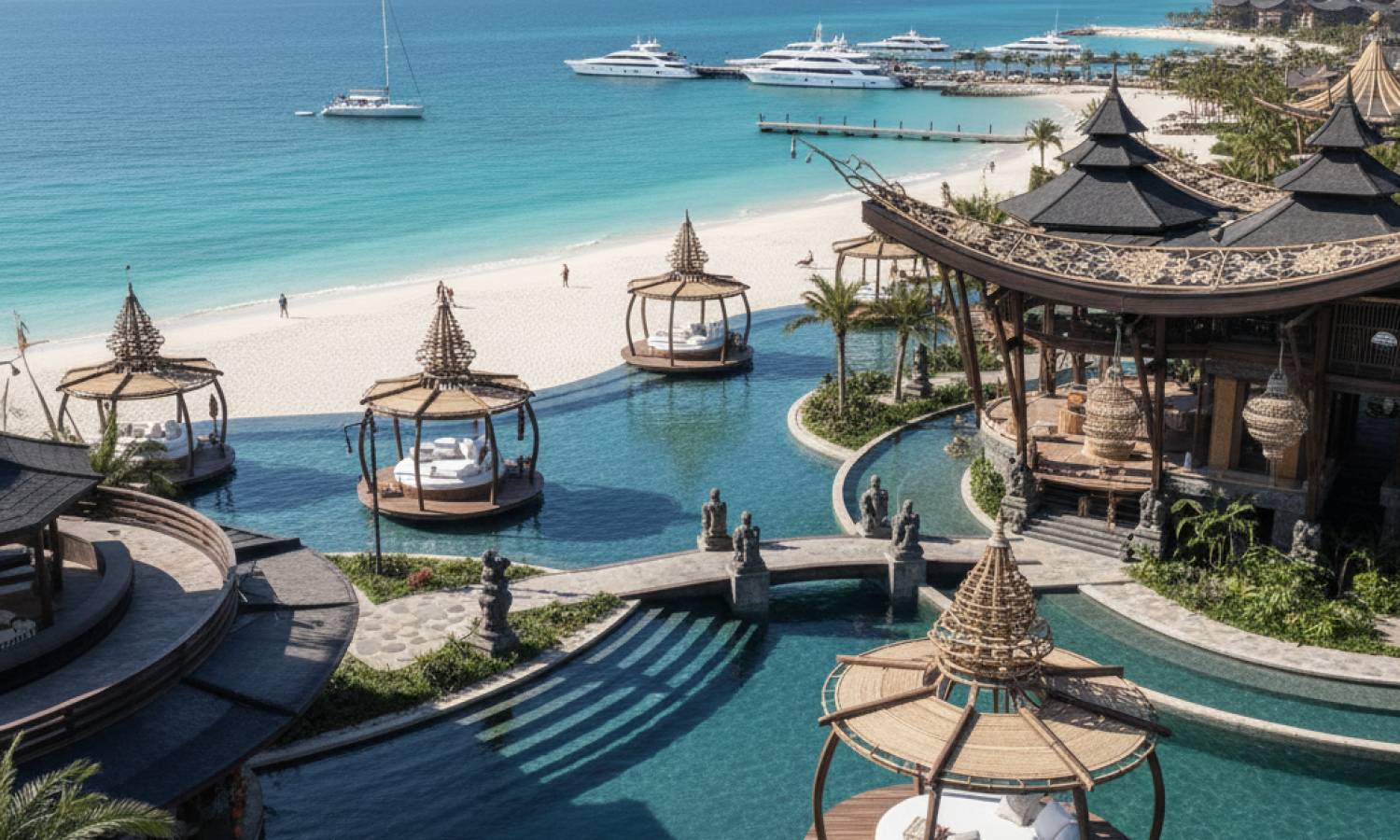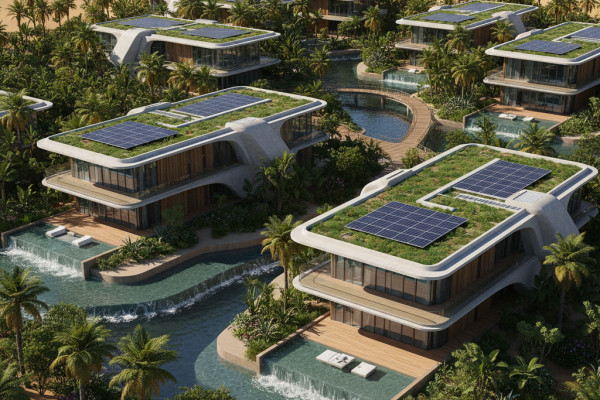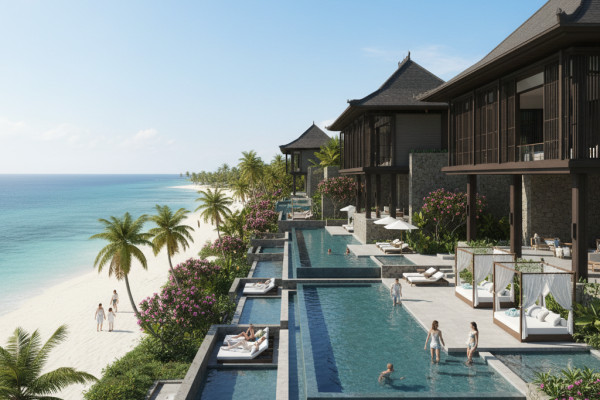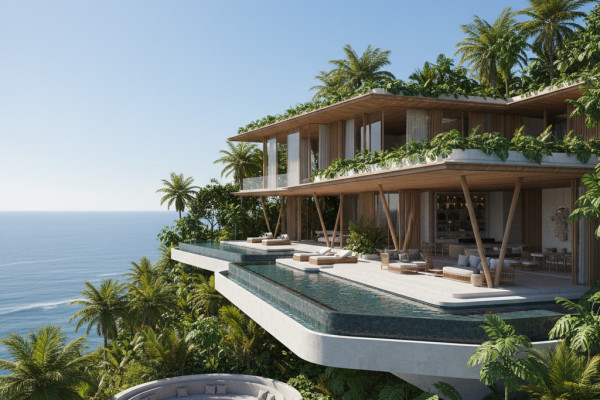
Bali’s Iconic Hotels and Resorts: Where Art Meets Timeless Investment Appeal
The Bali property market now extends beyond its traditional focus on beachfront properties and luxury villas. The island's top hotels and resorts now use Balinese art and cultural elements to create complete experiences which boost visitor numbers and property value. The unique lifestyle sector of Bali provides investors with cultural-based prime hospitality developments which create new ways to achieve ROI and attract investors.
Sofitel Bali Nusa Dua Beach Resort stands as a five-star luxury property which combines Balinese symbolic elements with international design through its wooden pillars that resemble sacred banyan trees and its intricately carved panels showing spiritual designs. The property uses cultural elements to create an unforgettable stay which connects visitors to Bali's cultural heritage while maintaining high occupancy levels.
Hotel Tugu Bali stands out in Canggu through its operation as a 'museum hotel' which showcases its extensive collection of antiques and historical artifacts. The hotel's collection of antiques and historical artifacts serves two purposes by creating an enhanced guest experience and by establishing the hotel as a cultural heritage site of Bali. The hotel's premium brand story provides an intangible yet powerful value that draws in sophisticated travelers who want to experience authentic experiences. The hotel experiences high demand for bookings which leads to increased room rates and property value growth.
The Apurva Kempinski Bali in Nusa Dua presents the grandeur of the Majapahit Empire through its architectural design and traditional artisanal work. The hotel's combination of heritage elements with luxury amenities creates an upscale market segment which attracts wealthy visitors who want exclusive experiences with cultural depth. The hotel serves as an experiential destination which expands Bali's luxurious accommodation options.
Bali Beach Hotel in Sanur generates value through its historical significance. The property connects to Indonesia's first president Soekarno through its monumental art relief which merges political and cultural heritage into the hotel experience. The hotel's historical connection creates a strong sense of place which protects brand value during market changes.
Sudakara ArtSpace at Sudamala Resort Sanur operates as a contemporary art space which supports Bali's artistic development by uniting local traditions with international artistic discussions. The resort's cultural value increases through this initiative which draws in increasing numbers of visitors who value art experiences.
The integration of local culture into hospitality investments creates more than visual appeal. The strategy provides guests with distinctive narratives and experiences which leads to higher occupancy rates and increased rental income and property value growth. Investors who understand cultural integration in their investments will support projects that create deep value for Bali's diverse international visitor population.
Key Investment Strategies for Buyers and Investors:
- Prioritize properties that embed local culture authentically; these command stronger market differentiation and guest loyalty.
- Consider resorts that offer immersive art and cultural programming, as these enhance brand prestige and appeal for high-end tourists.
- Leverage properties with unique historical or artisanal elements to secure premium rental yields and long-term capital growth.
- Monitor new developments that integrate Bali’s cultural heritage thoughtfully — these are positioned for robust demand in an increasingly experiential market.
The Final Takeaway:
Investors who want to succeed in Bali's luxury hospitality market should focus on properties that unite art with authentic island culture because these properties create lifestyle destinations that attract visitors forever.




